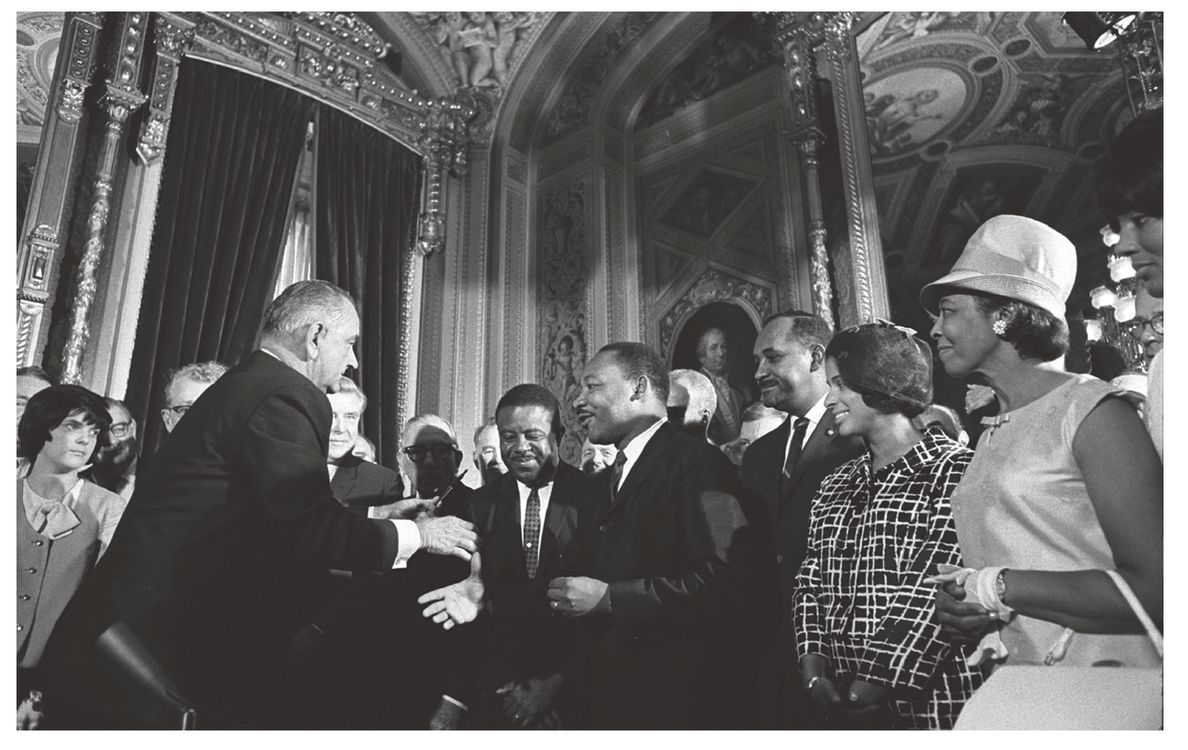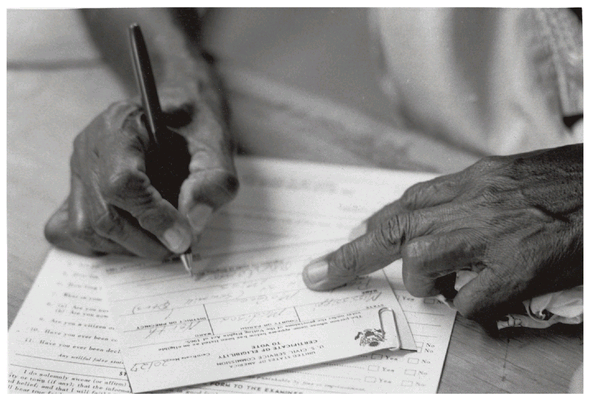After signing the Voting Rights Act into law, President Johnson hands one of the signing pens to Dr. King, watched by Ralph Abernathy, August 6, 1965.
VOTING RIGHTS ACT August 6, 1965
IN WASHINGTON D.C., President Johnson moved quickly. He used both the triumph and tragedy of the march to insist that Congress work together and hammer out a voting rights law. On August 6, 1965, the Voting Rights Act was ready for him to sign. It outlawed literacy tests and poll taxes and authorized the Attorney General to appoint federal registrars, if necessary, to make sure all qualified citizens were free to register. Dr. King and Rosa Parks were among those chosen to witness the historic bill’s signing.
Throughout the South, the presence of federal registrars ensured that all citizens could register to vote. Above, an applicant registers in Canton, Mississppi, 1965.
President Johnson ordered federal registrars to start immediately. On August 10, 1965, Charles’s mother, Ardies Mauldin, became the first person in the United States to register under the Voting Rights Act. By the end of the day, more than one hundred new black voters had been added in Dallas County. In Perry County, Cager Lee registered to vote for the first time in his life. In less than a year, Dallas County added more than 8,500 new black registrants to the voting rolls. All across the South, people stood in long lines to register. This time they weren’t turned away with cattle prods and billy clubs.
Selma, Dr. King said, was a “shining moment.”
It was also a testimony to nonviolent protest. Hundreds of students had put themselves at risk to change America’s voting laws. Their idealism and bravery encouraged the adults. Together, they learned to live with fear, but did not let it stop them. With only their songs and faith for protection, they believed they could make a difference.
And they did.


